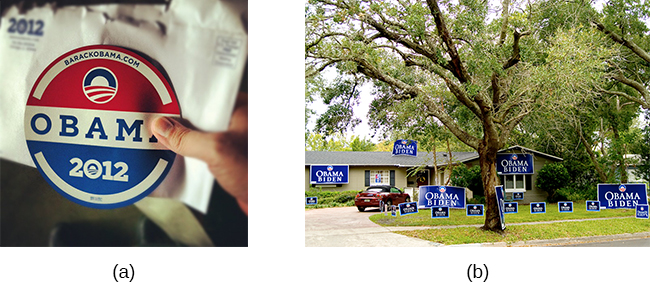| << Chapter < Page | Chapter >> Page > |
The central route to persuasion works best when the target of persuasion, or the audience, is analytical and willing to engage in processing of the information. From an advertiser’s perspective, what products would be best sold using the central route to persuasion? What audience would most likely be influenced to buy the product? One example is buying a computer. It is likely, for example, that small business owners might be especially influenced by the focus on the computer’s quality and features such as processing speed and memory capacity.
The peripheral route is an indirect route that uses peripheral cues to associate positivity with the message (Petty&Cacioppo, 1986). Instead of focusing on the facts and a product’s quality, the peripheral route relies on association with positive characteristics such as positive emotions and celebrity endorsement. For example, having a popular athlete advertise athletic shoes is a common method used to encourage young adults to purchase the shoes. This route to attitude change does not require much effort or information processing. This method of persuasion may promote positivity toward the message or product, but it typically results in less permanent attitude or behavior change. The audience does not need to be analytical or motivated to process the message. In fact, a peripheral route to persuasion may not even be noticed by the audience, for example in the strategy of product placement. Product placement refers to putting a product with a clear brand name or brand identity in a TV show or movie to promote the product (Gupta&Lord, 1998). For example, one season of the reality series American Idol prominently showed the panel of judges drinking out of cups that displayed the Coca-Cola logo. What other products would be best sold using the peripheral route to persuasion? Another example is clothing: A retailer may focus on celebrities that are wearing the same style of clothing.
Researchers have tested many persuasion strategies that are effective in selling products and changing people’s attitude, ideas, and behaviors. One effective strategy is the foot-in-the-door technique (Cialdini, 2001; Pliner, Hart, Kohl,&Saari, 1974). Using the foot-in-the-door technique , the persuader gets a person to agree to bestow a small favor or to buy a small item, only to later request a larger favor or purchase of a bigger item. The foot-in-the-door technique was demonstrated in a study by Freedman and Fraser (1966) in which participants who agreed to post small sign in their yard or sign a petition were more likely to agree to put a large sign in their yard than people who declined the first request ( [link] ). Research on this technique also illustrates the principle of consistency (Cialdini, 2001): Our past behavior often directs our future behavior, and we have a desire to maintain consistency once we have a committed to a behavior.

A common application of foot-in-the-door is when teens ask their parents for a small permission (for example, extending curfew by a half hour) and then asking them for something larger. Having granted the smaller request increases the likelihood that parents will acquiesce with the later, larger request.
How would a store owner use the foot-in-the-door technique to sell you an expensive product? For example, say that you are buying the latest model smartphone, and the salesperson suggests you purchase the best data plan. You agree to this. The salesperson then suggests a bigger purchase—the three-year extended warranty. After agreeing to the smaller request, you are more likely to also agree to the larger request. You may have encountered this if you have bought a car. When salespeople realize that a buyer intends to purchase a certain model, they might try to get the customer to pay for many or most available options on the car.
Attitudes are our evaluations or feelings toward a person, idea, or object and typically are positive or negative. Our attitudes and beliefs are influenced not only by external forces, but also by internal influences that we control. An internal form of attitude change is cognitive dissonance or the tension we experience when our thoughts, feelings, and behaviors are in conflict. In order to reduce dissonance, individuals can change their behavior, attitudes, or cognitions, or add a new cognition. External forces of persuasion include advertising; the features of advertising that influence our behaviors include the source, message, and audience. There are two primary routes to persuasion. The central route to persuasion uses facts and information to persuade potential consumers. The peripheral route uses positive association with cues such as beauty, fame, and positive emotions.
Cognitive dissonance often arises after making an important decision, called post-decision dissonance (or in popular terms, buyer’s remorse). Describe a recent decision you made that caused dissonance and describe how you resolved it.
Describe a time when you or someone you know used the foot-in-the-door technique to gain someone’s compliance.

Notification Switch
Would you like to follow the 'Psychology' conversation and receive update notifications?